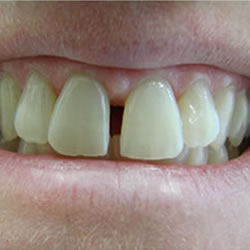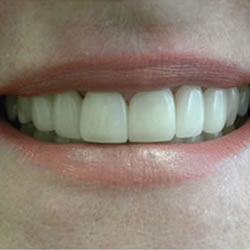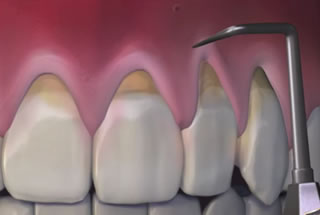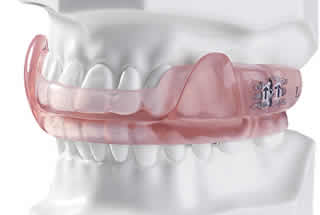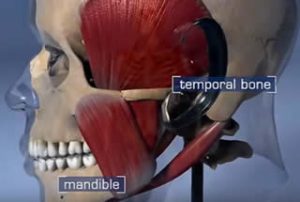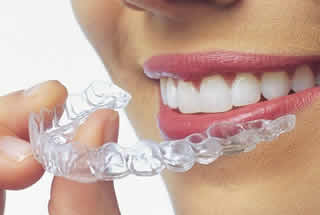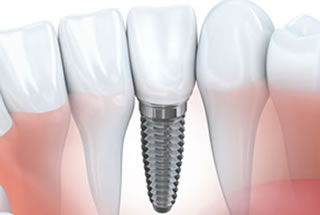Protecting your smile is a lifelong job. With daily brushing, regular flossing, and routine checkups, your teeth and gums should stay healthy. Understanding the important facts about dental health can help you make the best decisions for your oral health.
True or False: Cavities are only a problem for children.
Answer: False. With the fluoridation of water and increase in dental care for kids, tooth decay in this age group has dropped. Unfortunately, the level of decay in older adults has risen; medication use, limited mobility, and chronic health issues are part of the reason for the increase.
True or False: Missing teeth don’t need to be replaced.
Answer: False. Even one lost teeth can create problems in your mouth. Remaining teeth can shift into the gap, causing misalignment. As well, you have an increased risk for additional tooth loss.
True or False: Dental implants are a good option for lost teeth.
Answer: True. Designed to look and function like your original teeth, dental implants are the closest prosthetic to nature. The implants are metal posted that a skilled surgeon places in your jawbone. After your mouth heals, your dentist will position a permanent crown on each post.
True or False: It’s normal for your teeth to bleed when you brush.
Answer: False. Just as bleeding somewhere on an extremity isn’t good, neither is bleeding in your mouth. If your gums bleed, it indicates some sort of problem, like brushing too aggressively or gum disease, so don’t ignore that symptom.
True or False: Wisdom teeth are the last teeth to erupt.
Answer: True. Also called third molars, wisdom teeth usually come in during your late teens or early twenties.
Your teeth age right along with the rest of your body, so it’s a natural process for them to lose their whiteness and leave you wondering how to regain that youthful bright smile. Many dentists offer professional teeth whitening and stores sell at-home kits, but you should also try these techniques if you’re looking to maintain your brand-new pearly whites:
Treat your teeth right
Brush and floss your teeth carefully and regularly, and visit your dentist as scheduled to keep your teeth in good health.
Avoid foods that stain
Coffee, tea, cola, fruit juices, and red wine are some of the staining culprits because your teeth absorb colored liquids throughout your life. If you do drink dark beverages, sip them through a straw. Also, swishing water around your mouth for about 30 seconds after eating will help prevent stains.
Quit smoking
Tobacco of any kind can discolor your teeth, so either quit altogether or at least limit its use.
Eat crunchy foods
Try eating crunchy, crispy fruits and vegetables such as apples, carrots, and celery. The abrasiveness can help lift stains from your teeth.
Chew gum
Chewing gum increases the amount of saliva in your mouth, which is like a natural cleaner inside your mouth. Also, gum containing the sweetener xylitol may help prevent plaque.
Brush with baking soda
The abrasive elements in baking soda can polish your teeth, while the mixture of baking soda and water lightens stains. Dip your toothbrush in baking soda and brush with it once a week, or switch to a toothpaste that contains baking soda.
Do you suffer with chronic headaches or migraines? Do you hear your jaws click or pop? If you answered yes, you could be one of the millions living with TMJ dysfunction (temporomandibular joint dysfunction). Problems with TMJ dysfunction can generate a host of painful symptoms and negatively impact your wellbeing.
The TMJ joints hold the lower jaw to the temporal bone and allow routine jaw motion. When these joints are misaligned, associated muscles are strained and discomfort can occur. Stress, heredity, certain habits, and a number of other factors can contribute to TMJ dysfunction.
If you think TMJ dysfunction is a problem for you, contact your dentist. The doctor will complete a thorough exam and then make treatment recommendations. Dr. Yolanda Cruz offers Joint Vibration Analysis (JVA), which records the vibrations that occur during jaw movement. This gives Dr. Cruz a better understanding of the TMJ function before and during the creation of a dental appliance or oral splint. Other treatments include physical therapy, stress reduction, rebuilding damaged teeth with restorations, or habit changes to relieve TMJ symptoms.
These tips may help you deal with your TMJ dysfunction:
• Apply warm compresses to the area, which may reduce inflammation and soothe discomfort.
• Consider meditation to slow breathing, help you relax, and alleviate uncomfortable symptoms.
• Find an effective way to handle stress. A calming bath, long walk, or yoga class may ease your anxiety and reduce triggers for flare ups.
• Talk with your dentist about a mouth guard. An oral splint can keep your jaw in the proper position so that the chewing system doesn’t become strained.
• Join a support group. Talking with others who have similar experiences can give you a safe place to share your feelings and find comfort.
Your diet impacts your overall wellness. Making good choices will keep your body healthy, including teeth and gums. We all know that you should get plenty of fruits, vegetables, and whole grains in your diet. Certain foods and beverages provide particular benefit to your mouth.
Milk and yogurt
Low-fat milk and unsweetened yogurt are low acid foods. These options reduce the acid erosion that can weaken tooth enamel. Dairy choices, including cheese, also have the calcium you need for strong teeth and bones.
Green tea
Several benefits come from green tea. The antioxidant plant compounds, called polyphenols, in the tea prevent plaque from sticking to teeth, reducing your chances of developing tooth decay and gum disease. Green tea may also help control bad breath.
Onions
Because onions contain powerful antibacterial compounds, they kill various bacteria that inhabit your mouth. Raw onions offer the most benefit.
Apples, celery, and carrots
These crunchy foods massage gums and clean between teeth, promoting a healthy mouth.
Sesame seeds
High in calcium, sesame seeds help build enamel, and they also slough off plaque, lessening the chances of cavity development.
Animal protein
Lean cuts of chicken, turkey, and beef, as well as eggs, contain phosphorous, which works with calcium to strengthen our bones.
Water
Drinking H2O keeps your mouth hydrated and helps with saliva production. Saliva acts as a natural cleanser, washing away food debris and bacteria from your mouth.
Dr. Yolanda Cruz dentistry – Dental Health – Toronto Canada Dentist
A good percentage of dental consumers don’t currently have a general dentist. If you are looking for a dental provider for yourself or family, the task may seem overwhelming. It’s important to select someone you feel comfortable with and who fits your personality. You can make the search process easier with these helpful hints:
Ask others
Talk with friends, family, and co-workers about which dentists they use. Referrals are a great way to get the process started. You can also use the Internet as a valuable resource in your search.
Make a consultation appointment
Establishing a good relationship from the beginning is important, so schedule a consultation to meet your top choices and get a feel for their offices. This appointment is your opportunity to ask questions and gather basic information.
Evaluate the dentist’s skills and knowledge
Find out what professional organizations the dentist belongs to and how much importance he or she places on continuing education. Dentists are required to take a certain number of hours, but good providers generally exceed those levels. Some even make the time to teach, such as Dr. Yolanda Cruz, who is a clinical instructor at the faculty of Dentistry at the University of Toronto.
Check the dentist’s work
Most providers will have testimonials from satisfied patients. They may also have Before and After photos that will give you a chance to see some of the doctor’s handiwork. For example, you can view pictures of actual patient dental work on the website of Dr. Yolanda Cruz.
Start small
After your consultation, schedule a cleaning. During this visit, observe how the dentist and staff respond to you. Are they attentive to your needs? Do they make you feel valued and welcome? Feeling at ease with the dentist will help you commit to achieving and maintaining optimal oral health.
Dr. Yolanda Cruz dentistry – General and Cosmetic dentist – Toronto Canada Dentist
Every day, you probably get up and brush your teeth, which starts your oral care routine. Most people do other things throughout the day to promote dental health, including flossing, drinking water, chewing sugarless gum, and rinsing with mouth wash. You may not think about how you can protect your teeth as you sleep, but these small steps can make a big difference.
Before you go to bed:
Brush one last time
Make sure you get your teeth, tongue, and the roof of your mouth. Having a clean mouth means you won’t have to worry about bacteria forming cavities or harming your teeth while you sleep.
Floss before you hit the sack
Though brushing is important, flossing matters too. When you floss, you can reach between teeth and next to the gum line, removing plaque and bacteria so that these harmful substances don’t sit on your teeth all night long.
Use fluoride toothpaste
Brushing with fluoride toothpaste offers you added protection that helps strengthen your teeth.
Don’t eat sugary snacks before bed
Not only will this undermine your final brushing and flossing efforts, but it will also provide food for the bacteria in your mouth, allowing them to reproduce and wreak havoc on your oral health.
Keep water by your bed
Staying hydrated will help your teeth and gums stay moist as well. Water intake also promotes saliva production, which naturally washes germs and bacteria from your mouth.
We care about your oral health at Dr. Yolanda Cruz dentistry – General and Cosmetic – Toronto Canada Dentist

 E-Mail Us
E-Mail Us  416-595-5490
416-595-5490